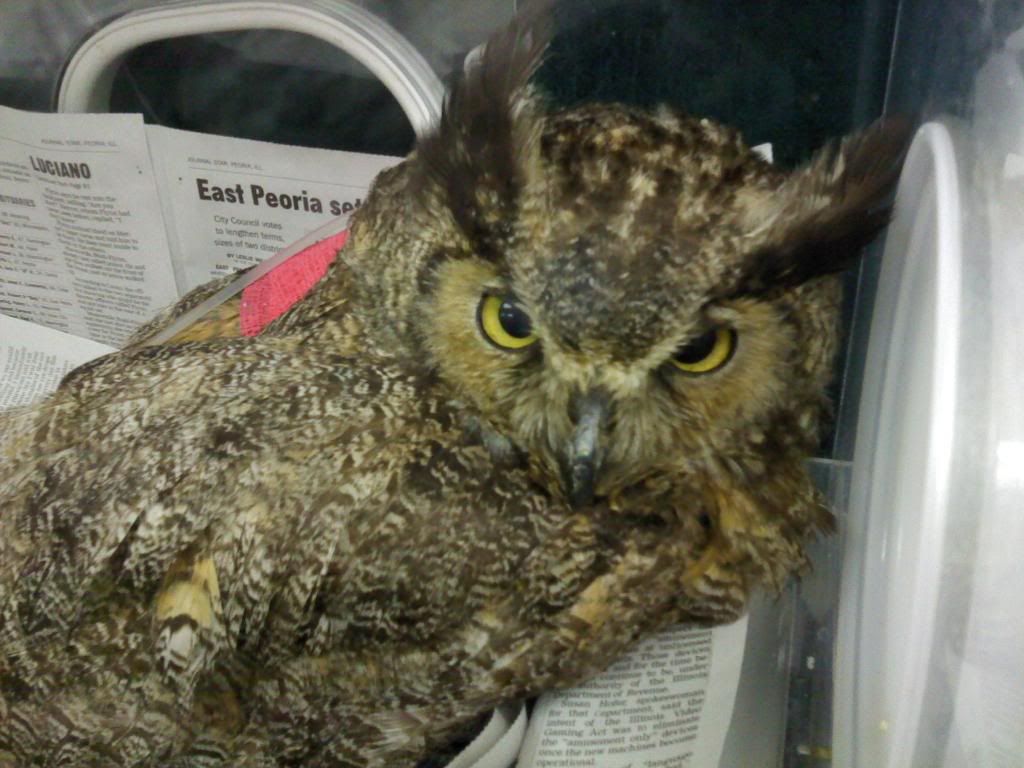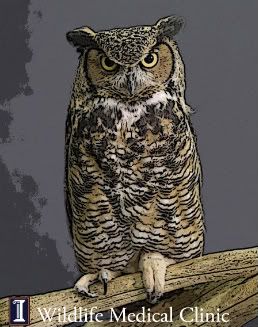Many of you who are familiar with our resident birds of prey from the Wildlife Medical Clinic know them from the Public Relations events they do throughout the community. Although helping to teach people about wildlife and wildlife safety is a very big part of the residents' job, these five special birds also play another role in the clinic. Occasionally, they help to save the lives of very debilitated patients by serving as blood donors. This was the case a couple weeks ago, when the very rare event of having not just one but two patients that needed transfusion occurred. The first patient that presented was a Great Horned Owl (Bubo virginianus). This owl was lying sternal, or on its belly, when it came in, which is a sign that a wild animal is feeling very ill. She was emaciated, having almost no muscles on the breast bone, where the large flight muscles are normally found. Blood work showed the owl was also very anemic. Winter is very hard on raptors, and it is not uncommon for hawks and owls to come in to the clinic this time of year suffering from similar symptoms, though this Great Horned Owl was especially weak.
Normal fluid therapy was not going to be sufficient in such a debilitated patient, and after conferring with the doctors, it was decided to have Nokomis, our resident Great Horned Owl, serve as a blood donor to give the patient the best chance for survival. Nokomis was anesthetized to collect 10mL or about 1% of his blood volume, which was then slowly transfused to the new owl through a special line with a filter to remove any clots that may have formed.
Just as the transfusion in the owl was being finished, another patient arrived at the clinic. This one was a juvenile Red Tailed Hawk (Buteo jamaicensis )that had almost identical problems to owl. Once again, the decision was made to perform a transfusion to give the starving hawk the best chance of survival. Odin, our 13 year old resident Red Tail, served as the donor this time. It was a very late night before everything was completed, but over the next few days both transfusion patients improved, beginning to stand on their own and look more alert. Both Nokomis and Odin did very well after donating their blood, and each received extra TLC to thank them for their contributions! To meet Odin, Nokomis, or any of our other resident raptors and to learn more about wildlife, visit our main website to schedule a PR event for your group. http://vetmed.illinois.edu/wmc/pr_visits.html
Getting Ready to Place an IV in a leg vein for the Red-Tailed Hawk
The Great Horned Owl Resting After the Transfusion







2 comments:
This is a heart warming story. I had no idea this could be done. I am very impressed!
Kate
wall art
I myself as a animal-lover look up towards your line of education+dedication. You's are truly what this world over-looks.I will bookmark this blogspot with hopes of reading/viewing new stories as they come along. Mike from Jersey
Post a Comment